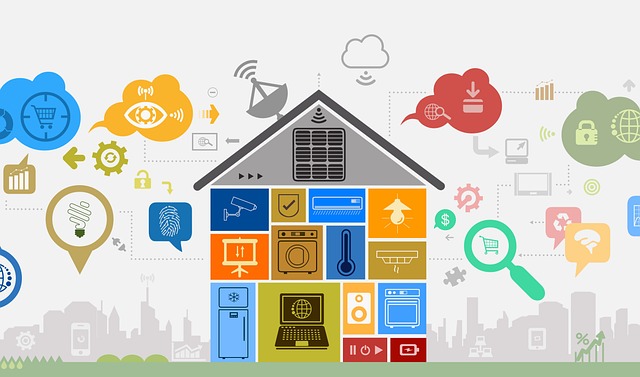The way we live is changing rapidly. One of the largest changes is how our houses become more connected. This is thanks to the internet of things, which makes it possible for our houses to be controlled by smartphones and other devices. This article will explore how connected houses are changing how we live and how they are becoming more popular.
What Are Connected Houses?
Over the past few years, the connected home idea has become increasingly popular. The term “connected home” refers to a residence equipped with technology that allows homeowners to remotely control various aspects of their home. This can include controlling the temperature, turning on and off lights, and even locking and unlocking doors.
One of the main benefits of a connected home is the increased level of security it can provide. Homeowners can use their smartphones or other devices to keep an eye on their homes even when they’re not there. They can receive alerts if there’s any unusual activity and remotely access security cameras to see what’s happening.
Another benefit of a connected home is the ability to save energy
The Rise of The Connected House
The internet of things is making its way into our homes through connected devices. This trend is changing how we live, making our homes more efficient and giving us more control.
One of the most popular applications for connected devices is home automation. This refers to using devices to automate tasks around the house, such as turning off lights when you leave the room or setting the temperature based on your schedule. Home automation can save you time and money by reducing your energy usage.
Another benefit of connected devices is that they can improve your safety and security. For example, you can install a doorbell camera that sends alerts to your phone whenever someone comes to your door. You can also set up motion sensors that detect intruders and automatically turn on the lights or send an alert to your security system.
How Connected Houses are Changing The way we Live
Smart home technology is becoming increasingly prevalent, with more and more households outfitted with devices that can be controlled remotely. This shift is changing how we live, making our homes more convenient and energy-efficient.
One of the most significant advantages of connected homes is their increased convenience. Instead of being home to perform tasks like turning on the lights or adjusting the thermostat, we can now do these things from anywhere using our smartphones. This newfound flexibility makes it easier to juggle work and family commitments.
In addition to being more convenient, connected homes are typically more energy-efficient. By automatically controlling lights and appliances, we can avoid leaving them on needlessly, saving both money and energy. And since many of these devices can be monitored remotely, we can keep a closer eye on our consumption patterns and adjust accordingly.
The benefits of living in a connected house
A connected house is a home that uses technology to make residents’ day-to-day lives more convenient, comfortable, and efficient.
Some of the benefits of living in a connected house include:
- Never worry about losing your keys again – you can use your smartphone to unlock your door.
- Automated lighting and temperature control – you can program your lights to turn on and off at certain times or adjust your home’s temperature remotely.
- Save money on energy bills – by installing smart thermostats and monitoring your energy usage, you can ensure that you’re not wasting any power.
- Improved security – with cameras, sensors, and alarms all linked up, it’s never been easier to keep an eye on your home and deter burglars.
The challenges of living in a connected house
Living in a connected house has its challenges, but they are nothing that can’t be overcome with a little planning and forethought. One of the biggest challenges is ensuring that all of your devices are compatible and perform jointly seamlessly. Challenge is holding your data secure from hackers who may try to access it through your home network. Finally, it would help if you were prepared for the occasional technical glitch or power outage, as these can disrupt your home’s connection to the outside world.
The Future of Connected Houses
In the past decade, there has been a shift in the way that people view their homes. No longer are houses simply a place to live, but they are now seen as an extension of one’s personal brand and lifestyle. This is especially true for young people who have grown up with technology as an integral part of their lives. They are used to being connected to the internet at all times and expect their homes to be just as connected.
As more and more devices become interconnected, it is becoming easier for people to control their homes from afar. For example, it is now possible to turn on the lights, adjust the thermostat, and even start the coffee maker from your smartphone. While this might seem a small convenience, it indicates a larger trend towards connected houses.
Conclusion
Connected houses are changing how we live by making our homes more efficient and giving us more control. They also have the potential to improve our quality of life by providing us with more information and options. Connected houses are the future of home living and will make our lives easier and more enjoyable.













Commented Posts